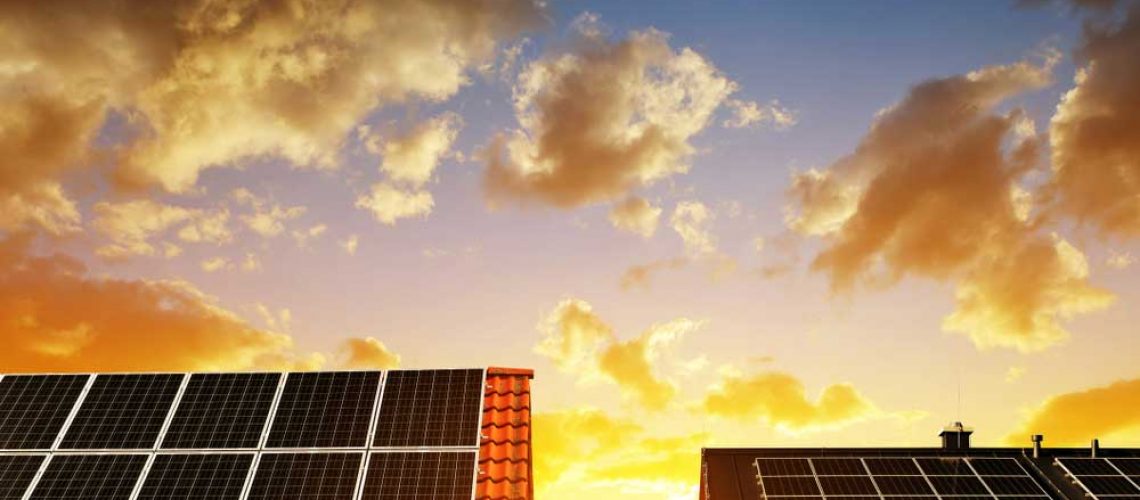Solar energy has increased in popularity over the years as a renewable resource that reduces energy costs and promotes a positive impact on the environment. For many, adding solar panels is an investment that increases a home’s curb appeal and resell value. Although the option of using solar panels seems beneficial across the board, you may still wonder: is solar roofing worth it? The answer is yes.
Of course not every home will have the exact same advantages and the amount of savings is dependent on a variety of factors. For most San Diego and other Southern California homes, the amount of sunshine alone makes this choice a practical one. However, there are details that help break down the decision in a more concrete way to help you feel confident that your home has optimal solar panel savings potential.
Factors to think about when considering if solar roofing is the best route to go include:
- Cost of solar panels per watt
- Tax credits and/or solar incentives
- Current roof condition and life expectancy
- Square footage and available sunlight
- Maintenance and other recurring costs
- Environmental impact
Exploring each of these areas will help you determine how much of a solar panel return on investment you’ll receive for your home or business. By reviewing the benefits of solar roofing and how they apply to your specific situation, it will clearly illustrate if it’s worth it.
Consider the Solar Panel Costs Per Watt
So, how much does solar roofing cost? According to a solar panel investment calculator backed by the U.S. Department of Energy, the average cost of solar panels per watt is $4.05 in California. This price has steadily declined since 2015 when the average was $5.48 per watt, according to data reported by the California Solar Initiative (CSI). Currently, residential buildings make up the majority of solar projects across the state at 67% and commercial buildings make up 24%, followed by educational, industrial, other government, and non-profit buildings.
In addition to the solar costs per watt, pricing is also determined by the solar system size, equipment options, and tilt of the panels. Since each roof design is different, starting with a base average of solar panel savings can give you a ballpark idea of what it will cost in total. An in-person assessment will provide you with a quote that’s customized to your specific needs, which is based on your roof’s age, condition, and shade factor.
Uncover Tax Credits and Incentives
Starting in 2020, under current legislation, California homeowners can take advantage of the solar tax credit of 26% of the total system cost with no upper limit. Homeowners that added solar paneling in 2019 can claim a tax credit of 30%. Additionally, there are multiple incentives available throughout the country that homeowners and/or businesses can apply for after installing solar panels. In California, these include programs such as the:
- CSI Thermal Program promotes the installation of solar systems in homes and businesses.
- New Solar Homes Partnership encourages the construction of new energy-efficient homes using solar power.
- Self-Generation Incentive Program (SGIP) provides incentives for consumers that have solar PV systems larger than 30kW.
There are also city-based initiatives for the use of renewable resources that provide savings to consumers who use solar energy and can help to offset part of the cost of installation.
Assess Current Roof Condition and Life Expectancy
Your roof’s current condition makes a difference in the efficiency of solar panel use. If your roof is nearing its life expectancy and/or needs repairs, it may not be a viable candidate for solar roofing until it has been fixed or replaced. If there’s no intention to make general roof repairs, installing solar panels may not be the ideal move since it requires a solid foundation to work most effectively. It depends on the amount of work your roof needs.
If your roof is already in suitable condition, the life expectancy of solar panel installation is anywhere from 25-40 years. The solar panel savings you experience for the next few decades and the increase of value to your home may be worth the time and cost involved. An experienced solar roofing technician can conduct an audit of your roof and determine what design changes or repairs must be completed for the best solar energy performance.
Determine Viable Square Footage and Available Sunlight
The value of solar roofing in San Diego is beneficial because the majority of the year calls for sunshine. Depending on which area you live in specifically and how much of your roof is covered by trees, you may not have enough square footage available to be eligible for solar panels.
To serve as a baseline with regards to available sunlight and square footage, Google’s Project Sunroof provides information that tells you how much usable sunlight is available for your home address per year and how many square feet is available for solar panels. However, the lack of sunlight doesn’t automatically mean solar roofing can’t be part of the plan.
Solar roofing requires strategic design in the tilt of the solar panels and how many you’ll need to make the energy savings be a cost-benefit to you. With the help of a roofing company that’s familiar with solar panel installation and use, you can get recommendations on what will be most beneficial.
Factor in Maintenance and Other Recurring Costs
Solar roofing requires minimal maintenance, but the products used make a difference in how efficient and effective it will be. It’s important to work with materials that are weather-resistant to conditions like harsh winds and sea salt residue that are common to Southern California. Using high-quality materials will protect the longevity of your roof and make the most of your investment.
Factor in how often you’ll need maintenance and any other associated costs, such as property insurance, when determining the value of a solar project. Keep in mind that solar panel installation is a one-time cost with a life expectancy value that can last up to 40 years. As you budget for fixed versus future solar costs, also take into account how solar panel installation can help increase the value of your home if you plan to sell it down the road.
Evaluate the Environmental Impact
Finally, the positive environmental impact of using renewable resources is one of the main reasons people are opting to install solar roofing. It’s valuable for many to reduce their carbon footprint and use natural resources as much as possible to power the home. The accessibility to solar power is another way consumers are updating their lifestyles to become energy-efficient.
As an alternative to fossil fuels, solar energy reduces the amount of pollution that enters the air and negatively affects our climate. Through technology that allows the conversion of sunlight into electricity, there’s growing opportunity to have solar energy power our daily lives in a cleaner, more eco-friendly way.
In addition to showing what’s available in terms of usable sunlight and available square feet for solar panels, Project Sunroof also provides information about the environmental impact of solar roofing, educating people on how solar panels work. While this online tool cannot calculate the details of your roof, such as roof angle, age, or condition, it can show the level of carbon dioxide emissions that are reduced by equating it with how many tree seedlings are preserved and how many cars solar energy takes off the road per year.
As an example, based on 2018 data from San Diego’s 92104 zip code, there are approximately 10K roofs with 8.5 million square feet of space made up mostly of flat roof tops. If solar panels were installed on all available space, the avoided carbon dioxide emissions would equal 49.9K metric tons, 10.6K passenger cars taken off the road for a year, and 1.3M tree seedlings that grow for 10 years. From an environmental standpoint, for many, it’d be worth it.
Decide What Solar Power Savings Means to You
When thinking about whether solar roofing is worth it for you, review the decreased costs of solar panels per watts, federal tax credits and regional incentives, and the positive impact it has on the environment, in addition to lowering energy costs. Prioritize what matters most and compare it to your current roofing and energy situation.
Although certain cities, like San Diego, have favorable weather conditions for solar roofing, homeowners can still benefit even if their area isn’t as sunny. Every category has to be reviewed and weighed equally to determine if it’s the right choice for you.
To understand the full breakdown of costs, a roofing specialist can conduct an audit and provide a customized quote that includes what, if any, repairs need to be made to your roof prior to any solar panel installation. The assessment will also include how many hours the project will take, the number of solar panels you’ll need, and how much for your roof is viable to use convert sunlight most efficiently.
Making changes to the home in any way always takes careful deliberation, but with the level of technology available today through solar roofing, it makes the idea of using solar energy that much more alluring. If you are interested in solar installation in San Diego, contact Preman today to schedule your consulation.
Sources:
- https://www.californiadgstats.ca.gov/charts/;
- https://www.seia.org/initiatives/what-rebates-and-incentives-are-available-solar-energy;
- https://www.epa.gov/energy/greenhouse-gas-equivalencies-calculator








